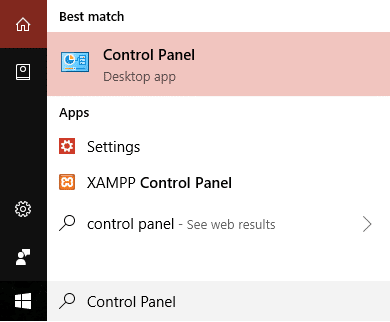But first, you should know why file extensions are important, well, it’s important because you could click on malware/virus files without even knowing so. For example, you downloaded a file security.pdf.exe, now if you have file extension hidden you will only see the file as security.pdf which is a big security risk as you will definitely open the file thinking it of as your pdf file. This file could potentially damage your system and that is why file extensions are important. When file extensions are disabled you would still see the icon of the program which is associated with that file type. For example, if you have a file test.docx, then even if you have file extension disable, you would still see the Microsoft Word or the default program icon on the file but the extension “.docx” would be hidden.
This doesn’t mean that you can’t be tricked by virus or malware because they can disguise the icon of your file type and still be a malicious program or application, so it always a good idea to enable file extensions in Windows. So without wasting any time let’s see How to Show File Extensions in Windows 10 with the help of the below-listed guide.
How to Show File Extensions in Windows 10
Make sure to create a restore point, just in case something goes wrong.
How to Show File Extensions in Windows 10 Method 1: Show File Extensions via Folder Options Method 2: Show File Extensions via File Explorer Settings
Method 1: Show File Extensions via Folder Options
1.Search for Control Panel in Windows search then click on the search result to open Control Panel.
Note: Or you could directly open Folder Options by pressing Windows Key + R then typing C:\Windows\System32\rundll32.exe shell32.dll,Options_RunDLL 7 and click OK. 2.Now click on Appearance and Personalization inside Control Panel.
3.On the next screen, click on File Explorer Options.
4.Now switch to the View tab and uncheck “Hide extensions for known file types.“
5.Click Apply followed by OK. 6.Reboot your PC to save changes.
Method 2: Show File Extensions via File Explorer Settings
1.Press Windows Key + E to open File Explorer. 2.Now click on View tab and checkmark “File name extensions.“
3.This will enable file extensions till you again uncheck it. 4.Reboot your PC. Recommended:
Fix NVIDIA Control Panel Not Opening How to Reset Network Data Usage on Windows 10 Fix Nvidia Kernel Mode Driver has stopped responding How to disable the Task View Button in Windows 10
That’s it you have successfully learned How to Show File Extensions in Windows 10 but if you still have any queries regarding this post then feel free to ask them in the comment’s section.


![]()




